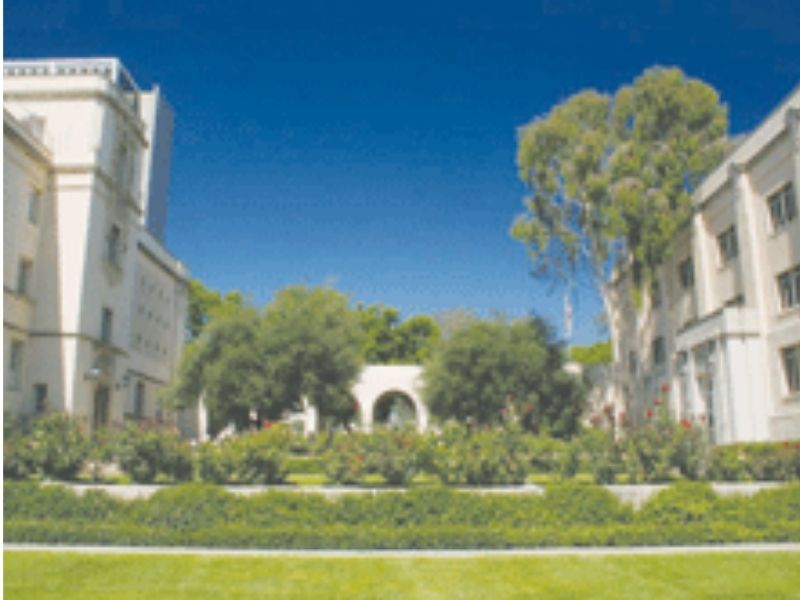In the THE World University Rankings 2020 California Institute of Technology, USA is ranked No.2. Moreover 31 Caltech alumni/faculty have won the Nobel prize and 66 the US National Medal of Science/technology
“What makes Caltech unique is our focus on education, science and engineering. But most of all, on giving everyone at the institute the means and flexibility to pursue his or her best ideas,” says Jean-Lou Chameau, president.
California Institute of Technology, USA is particularly reputed for its demanding and rigorous undergrad core curriculum with students required not just to study a major, but also acquire knowledge of the basic sciences, humanities, and social sciences. All undergrad students must take the core curriculum which comprises three terms each of mathematics and physics, two terms of chemistry, one of biology, a freshman elective ‘menu’ course, two terms of introductory lab courses, one term of science writing, 12 terms of humanities, and three terms of physical education.
Sited on a 124-acre campus, California Institute of Technology traces its origin to a vocational school founded in Pasadena in 1891 by local businessman and politician Amos G. Throop. The school was successively known as Throop University, Throop Polytechnic Institute and Throop College of Technology, before acquiring its current nomenclature in 1920.
Pasadena. Located in Los Angeles county at the foot of the San Gabriel Mountains, Pasadena (pop. 141,000) hosts a plethora of science and cultural institutions. They include the NASA Jet Propulsion Laboratory; Norton Simon Museum of Art (one of the world’s finest collections of European, American, and Asian art); Pacific Asia Museum (rare artworks and artefacts from Asia); Huntington Library, Art Collections, and Botanical Gardens (150 acres of breathtaking gardens, world-class rare-book libraries, art galleries, etc), and the Los Angeles County Arboretum and Botanical Gardens (127 acres of gardens replete with fauna including peacocks, ducks, etc).
Pasadena has a hot-summer Mediterranean climate and year-round sunshine.
Campus facilities. Caltech’s 124-acre campus offers state-of-the-art academic, research and sports facilities. The campus hosts a plethora of labs and research facilities which offer unmatched technological tools and resources for students and faculty. Comments the university’s website: “It’s a bit difficult to describe the facilities and other ‘physical resources’ Caltech has to offer students… that information would likely be outdated by the time you read it.”
Significant among the research centres are its seismological laboratory, one of the world’s foremost centres for geophysical research; Beckman Institute, a multidisciplinary centre for research in the chemical and biological sciences; Infrared Processing and Analysis Center which conducts important data-intensive processing tasks for NASA’s infrared and submillimeter astronomy programs; the Spitzer Science Center, which provides development and operations support for the Spitzer Space Telescope, the final mission of NASA’s Great Observatory Program; the Center for Advanced Computing Research, which does computer-based modeling for the study of scientific phenomena and engineering designs; Jorgensen Laboratory (energy science and technology initiatives) and The Linde + Robinson Laboratory (environmental science research).
The Caltech library system comprises two central facilities: the Millikan Library, housing Millikan collections and library administration, and the Sherman Fairchild Library of Engineering and Applied Science, housing the engineering collections, the library information technology group, and the Digital Media Center. In addition to Millikan and the Sherman Fairchild, the library system includes five disciplinary libraries: astrophysics, geology, public affairs, earthquake engineering, and business management.
Sports facilities include two gymnasia, a 3,500 sq. ft weights room, cardio-vascular area, four racquetball courts, two international squash courts, two 25-yard pools and spa, eight tennis courts, multipurpose room with spring floor, rock climbing room, two multipurpose fields, and 400-metre Mondo track. There are also over 1,000 student clubs and organisations on campus.
Admission. Unsurprisingly admission into California Institute of Technology, USA is very competitive with an acceptance rate of 12.8 percent. For undergraduate admissions, the minimum eligibility criterion is completion of Plus Two with top grades. Caltech accepts the IGCSE, O, AS, and A Level curriculums as well as the IB diploma. The minimum academic preparation required is four years of math (including calculus), one year each of physics and chemistry and three years of English. Moreover, applicants have to submit the following test scores: SAT w/writing or ACT w/writing, SAT mathematics Level 2, 1 SAT subject test: biology (ecological), biology (molecular), chemistry, or physics and TOEFL test results.
Caltech uses the Common Application for freshman admissions. All students must submit the Common Application and the Caltech Supplement. Both application forms are available online at commonapp.org. The fully completed application should be accompanied with an application fee of $65, exam and academic transcripts, standardised test scores, letters of recommendation and any other letters, research papers, etc. The deadline for receipt of applications is January 3.
For further information contact Caltech Undergraduate Admissions, 1200 E. California Blvd. MC 10-90, Pasadena, CA 91125. Ph: 626-395-6341; e-mail: ugadmissions@caltech.edu; website: www.caltech.edu.
Accommodation. All first year undergraduate students are obliged to live on campus in one of the eight houses described as “self-governing living groups”. Each house accommodates 65-100 students from all four classes, freshman through senior, and each has a resident associate living on the premises. After the freshman year, students may live off campus; but 80 percent of undergrads choose to live on campus throughout their four years.
Degree programmes. Caltech offers undergraduate (BS) and graduate (MS, MS Eng, Ph D) programmes across six academic divisions (see box).
| Scholastic options at Caltech
Caltech offers undergraduate, graduate and doctoral degree programmes. Its six academic divisions offer the following undergraduate majors: Biology. Biology Chemistry and chemical engineering. Biomolecular, environmental, process systems, and materials engineering. biochemistry and molecular biophysics, inorganic chemistry, organic chemistry Engineering and applied science. Applied and computational mathematics, applied physics, bioengineering, computer science, electrical engineering, engineering & applied science, computational and neural systems, environmental science, materials science, mechanical engineering Geological and planetary sciences. Geobiology, geochemistry, geology, geophysics, planetary science Humanities and social sciences. Business & management economics, English, history, history and philosophy of science, philosophy, political science Tuition fees (per year): $38,085 |
Summiya Yasmeen
